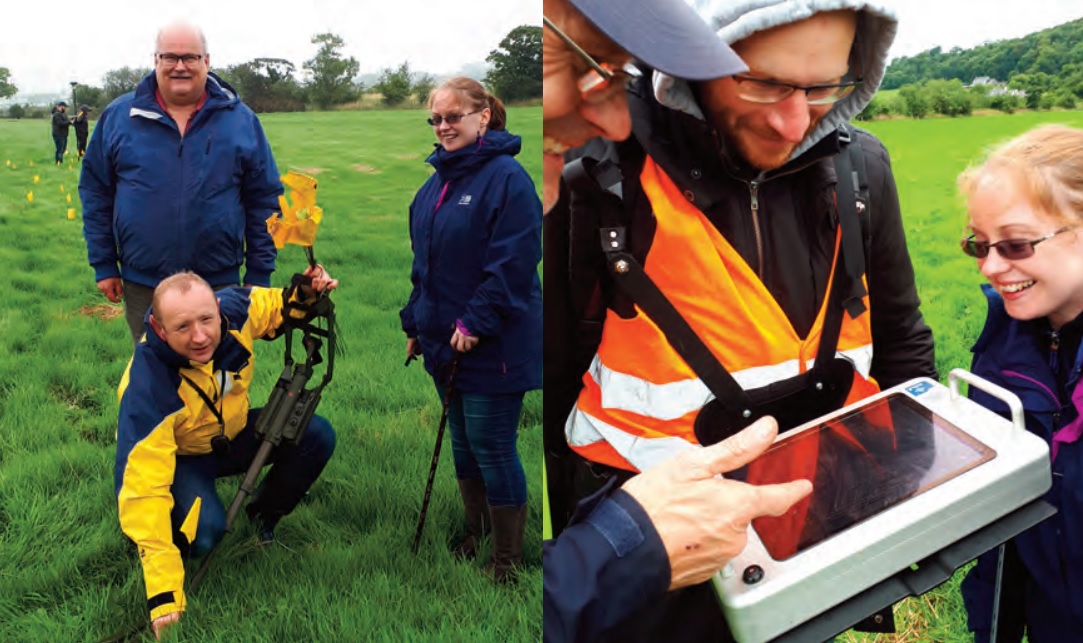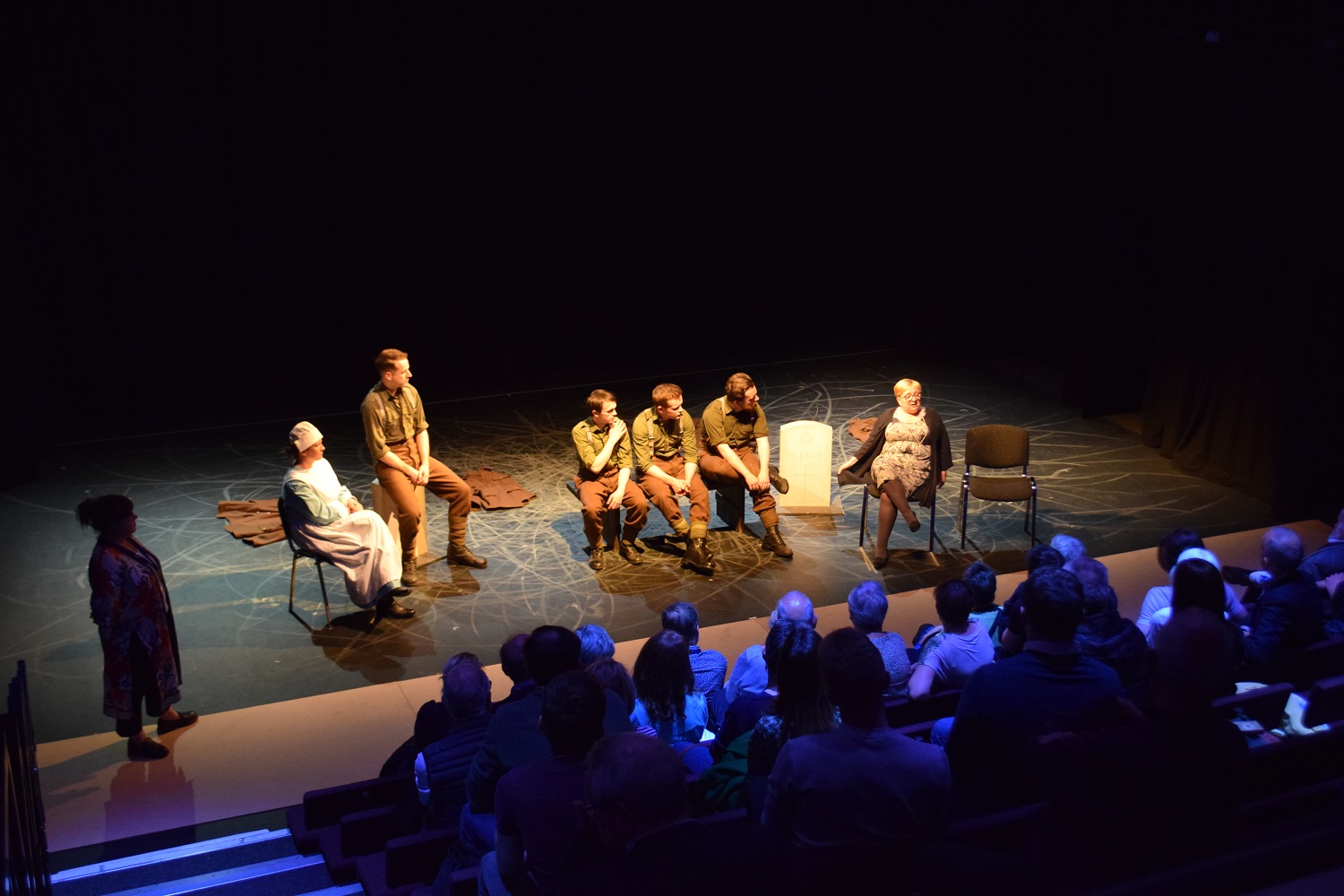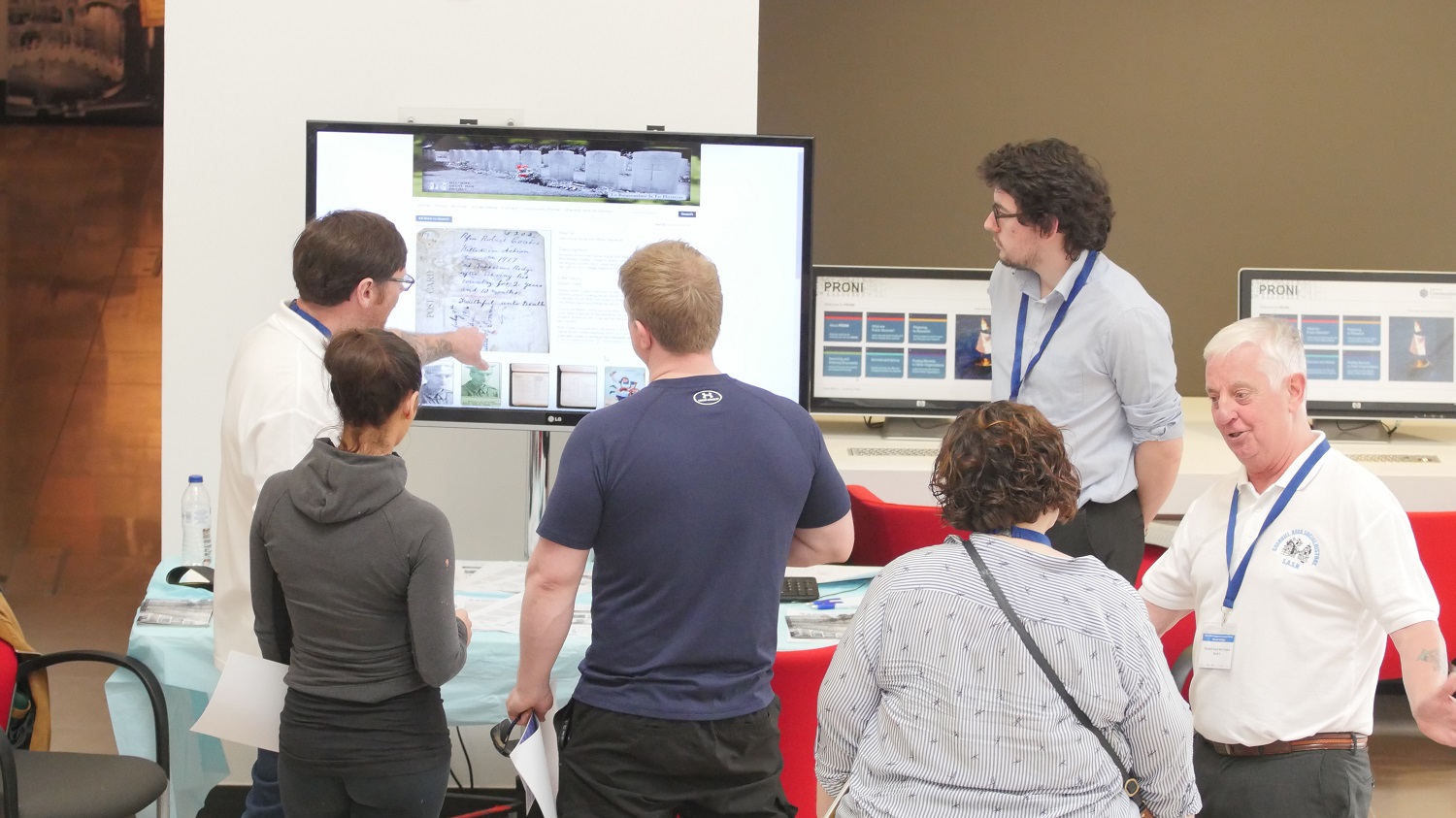Downloads
The centenary of the start of the First World War (WW1) in 2014 presented questions about how to effectively commemorate and draw attention to untold experiences of the war.
Research and public engagement by geographers at Queen’s University Belfast (QUB) with communities and institutions through a range of events, training and resources conveyed and commemorated neglected or contested histories from the period in Northern Ireland and beyond.
Challenge
Commemorating the First World War in relevant, embedded and engaging ways is a cyclical challenge and became especially relevant around the centenary of the start of the war in 2014.
Engaging communities with commemoration and histories of the war presents a number of challenges for both researchers and community groups:
-
conveying contextualised historical information, particularly with a geographical perspective presents technical challenges in visualisation, presentation and accessibility;
-
engaging local communities with local history, especially where that history is embedded and contested in the community, can be difficult; and
-
building collaborations and sharing skills to achieve strategic objectives is challenging in terms of co-ordination and knowledge-sharing.

Participants surveying local heritage – Battlebags & Blimps Project (Credit: Living Legacies project)
Solution
The Living Legacies 1914-18 project developed a major programme of events, partnerships, tools and resources to tell the stories of people affected by the war.
The project particularly focused on previously underappreciated voices from the devolved nations of the UK, both civilians and combatants, and local political issues and conflicts which had previously been neglected.
Living Legacies was the only geography-focused AHRC-funded public engagement centre. Led by Professor Keith Lilley and Dr Paul Ell (Queen’s University Belfast), the project was underpinned by geographical research on spatial and digital humanities, and built on previous projects in medieval geographies and linguistics, which had used geovisualisation, This interdisciplinary approach gave Living Legacies a strong spatial emphasis in its public engagement activities and community coproduction projects.
Living Legacies wide range of events in Northern Ireland and across the UK adopted a range of formats to educate and engage the public, such as community events which prompted direct engagement with the nuanced topic of how factory workers responded to the war in moral terms.

Audience reflections – The Medals all ‘Round Research Initiative’ (Credit: Living Legacies Project)
Benefits
Building capability
Living Legacies helped communities and participants form and contribute to a richer understanding of WW1. Using a “community upskilling” approach, the programme provided community-led groups and projects with specialist techniques and equipment, and helped participants create new digital resources to strengthen their existing Centenary projects and develop funding applications to HLF.
Visits to First World War coastal defence sites have enabled the group to test out new skills, including using Global Navigation Satellite Systems (GNSS) technologies for surveying the sites, for recording features, and then using Geographical Information Systems (GIS) and digital mapping to plot them out. The results of this fieldwork have already fed into the Northern Ireland ‘Defence Heritage Project’, led by the NI Historic Environment Division.
Community-based research workshops on landscapes, web-GIS and field-survey took place in Wales, Scotland, and England. Events were delivered with the Council for British Archaeology as part of its Home Front Legacy programme, in conjunction with other AHRC engagement centres, and in 2015 and 2017 with the Imperial War Museum.
Digital skills workshops also supported the delivery of the ‘Remembering 1916: Your Voices’ exhibition held at the Ulster Museum in 2016; Belfast City Council’s Somme100’ programme in 2016; and the Down County Museum for its History Hut.
Direct outputs from the project also include archival contributions and resources - the team produced a range of publicly-accessible resources including oral history recordings, toolkits for teaching and engagement, and a digital archive of objects and stories is hosted by QUB.
Raising awareness and improving understanding
Living Legacies also broke new ground in creating dialogue around events and participants which had previously been sidelined as politically-sensitive – for example, the exhibition on the history of the Connaught Rangers. Project work on issues thought to be divisive was commended by the DCMS – in particular, the Poppy Trail series of murals which helped “mitigate a rising problem of racist and sectarian graffiti on local walls”.
Working on these contested and sometimes controversial histories enabled the project to develop and shape working practices and policies across sectors dealing with contested heritage. The Community Relations Council adopted Living Legacies workshops in its best practice toolkit (2018) for the Decade of Centenaries, identifying these as a key element for their cross-community work in NI - this supported the “transformative” Remembering 1916 exhibition.
The Living Legacies outreach programme connected diverse communities across NI, including hard-to-reach groups in Loyalist and Republican areas, marginalised communities in places such as west Belfast and south-east Antrim, and communities in devolved nations across the UK. This enabled the project to engage a diverse range of people in marginalised communities in a multifaceted and interdisciplinary approach to remembering and commemorating WW1.
Living Legacies strengthened heritage partnerships and collaborations both during the Centenary and into 2019. Key stakeholders continuing this work include QUB, University of Ulster, University of Glasgow, University of Wales Swansea, Goldsmiths University of London, & Newcastle University, alongside Imperial War Museum, HLF, and Council for British Archaeology, Public Record Office Northern Ireland, Libraries NI, National Museums Northern Ireland and National Library of Wales.
Combining systems and data
Living Legacies undertook an overhaul for the Department for Community (NI) Historic Environment Division’s ‘Defence Heritage Project’ web-resource, through digitising existing records and developing an online-GIS platform to enable crowdsourcing. The new DHP platform was used by the community heritage project Battlebags and Blimps project led by Carrickfergus Museum in 2018

Communities online – SASH Great War Crowdsourcing Project (Credit: Living Legacies Project)
Further reading
-
The programme of events from Belfast Somme100, which was supported by the Living Legacies project
-
Report on the Remembering 1916 exhibition
Share this resource
This is an open access article under the terms of the Creative Commons Attribution License (CC BY NC 4.0), which permits use, adaptation, distribution and reproduction in any medium or format, provided the original work is cited and it is for non-commercial purposes. Please contact us for other uses.
How to cite
Royal Geographical Society (with IBG) (2020) Living Legacies highlights the untold story of WW1 in Northern Ireland. Available at www.rgs.org/impact/livinglegacies Last accessed on: <date>

